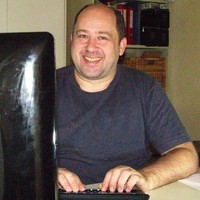Round #2
Last May we run our Team Lego initiative which turned out to be a success and exceeded our expectations. Unsurprisingly, we’ll be running the same initiative this year again.
How is the team doing so far
Here’s how the developers of the Team Lego initiative were divided:
- Seven are part of the web stack, working with Ruby on Rails and React.
- Five are part of the backend stack, working mostly with Java and AWS.
- Three are part of the mobile team, all working with Android.
- Two are part of the data team, working on data engineering and data science.
The last three months have probably been hectic for the new developers since they got exposed to the full blast of our production systems. Part of our Q1 IT OKRs have been these directives, aimed specifically towards helping our new colleagues:
- Ensure that there are opportunities for pairing with more experienced team members every week.
- Guide new team members towards being able to work with the team and not primarily the team leader.
- Every new member must be able to deploy and monitor part of their team infrastructure without assistance by the end of the quarter.
- Ensure that new team members get a good balance of maintenance tasks and new feature tasks.
The pressure is on, but our new colleagues seem to be responding to the challenges that we lay in front of them. Here’s an account of how some of them are doing.
Fanis is working in the commercial backend team. He joined the team at the point when we started introducing Flowable-powered automation flows in XE and he had the opportunity to see and contribute to the integration of the low-code platform into our architecture. He also contributed to the implementation of our new communications API that provides an interface to various systems that want to send outgoing communications to our users and customers. In the same team one can also find Juulia who also came out Team Lego and more or less took part in the same efforts as Fanis did.
George is also working in the backend but is part of the content team. Unlike Fanis, he delved more into the depths of our oldest legacy code. The most difficult task was wrapping his head around the multitude of business concepts and flows implemented by the code, and he has come through clean. His increasing understanding of the stack was sufficient enough to allow him to track down and fix a security vulnerability that was discovered in the codebase.
Vasiliki works on the other end of the infrastructure and is part of the web team. She has worked in multiple features for her team and got accustomed to most of the layers of our stack and applications. One of the latest examples of her work is a landing page which was highly anticipated and was implemented by her and other team members from the Team Lego initiative. She has also taken upon her to work as the support person of the team handling bug hunts and releases with great success.
Panos works in the mobile team that was formed last year as an Android developer. He took an active part in the implementation of the application redesign for our property vertical that was released recently. This was a major update of our mobile application. It was a significant effort to restructure the application code and follow the design specs layed out to the team, while staying focused for the duration of this change and Panos grew measurably through this project.
Next steps
We will start accepting applications for the new round of Team Lego in mid-May. The process will be pretty much the same - the only change we might do is slightly change the format and options of the online test.
